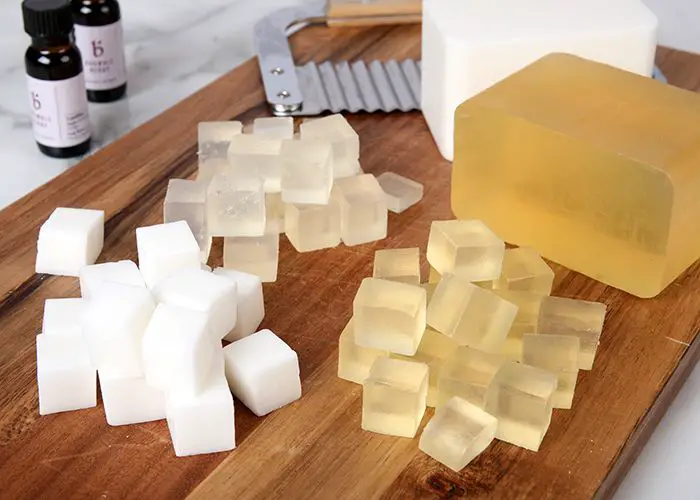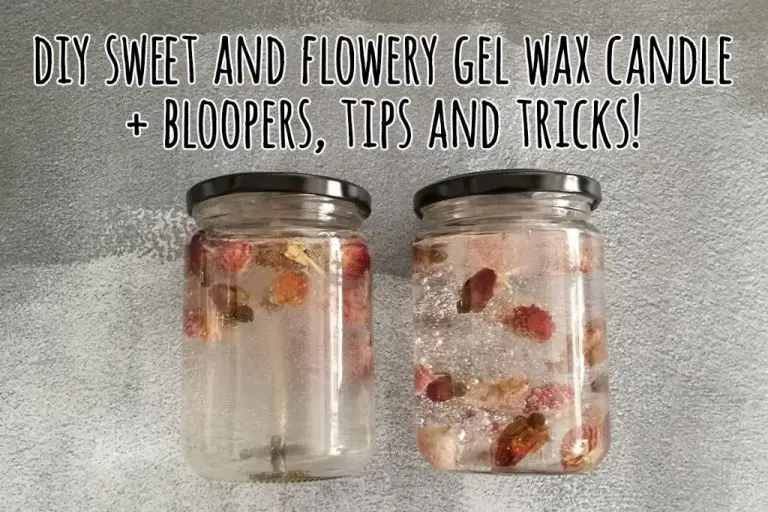How Do You Use Beeswax At Home?
Beeswax comes from honeybees and has been used for centuries in making candles, lotions, and beauty products. It has many uses around the home thanks to its unique properties. Beeswax is anti-bacterial, antifungal and works as an emollient to soften and moisturize skin. Research shows beeswax has immune-boosting antioxidants and its anti-inflammatory properties may help relieve skin irritations and allergies. Although beeswax can be purchased from stores and online, you can harvest and make your own beeswax at home with a beehive.
This article explores some of the most common uses of beeswax around the home:
Moisturizing
Beeswax is an excellent ingredient for homemade skincare products like lotion bars, lip balms, and skin creams. When blended with carrier oils and butters, beeswax helps lock in moisture and creates a protective barrier on the skin. Lotion bars made with beeswax have a solid balm-like texture that melts when applied to skin. The nourishing oils and beeswax soak in to moisturize without leaving a greasy residue. Beeswax is also a staple in DIY lip balm recipes as it helps the balm glide on smoothly and provides a subtle glossy sheen.
For a simple homemade moisturizer, you can blend beeswax with carrier oils like coconut oil or olive oil along with skin-loving butters like shea or cocoa butter. The beeswax helps turn the oils and butters into a thick, creamy skin cream. Look for recipes with around 1 part beeswax to 3-4 parts oil/butter for an optimal consistency. Essential oils can be added for fragrance. When applied to damp skin the moisturizer will soak in well and leave skin feeling soft and nourished.
Candle Making
One of the most popular uses for beeswax is making homemade candles. Beeswax has a natural honey scent and burns brighter and longer than paraffin wax candles. There are several types of candles that can be made with beeswax such as rolled, container, and votive candles.

To make rolled beeswax candles, you’ll need beeswax sheets, wicking, and essential oils for fragrance if desired. Start by cutting the wick to size and using double-sided tape to adhere it in the center of the beeswax sheet. Add a few drops of essential oils and roll up the sheet tightly around the wick. Seal the candle with more wax.Source
For container candles, pour melted beeswax into a glass or tin container and insert the wick in the center. You can use silicone molds to easily pop the finished candle out. Add essential oils to the melted wax before pouring for added fragrance. Cool the candle completely before use. Source
To make votive candles, pour the melted wax into votive holders or silicone molds. Make sure the wick is centered before the wax cools completely. Votives make great gifts and are easy to customize with essential oil blends. Source
Furniture Polish
Beeswax makes an excellent natural wood polish and conditioner. According to Lovely Greens, mixing beeswax with oils like linseed or coconut oil creates a nourishing polish that moisturizes wood and leaves a protective coating.
The beeswax fills in cracks and pores in the wood while the oil penetrates deep to condition the wood. This helps restore old, dry wood while protecting newer pieces. The Wood and Shop blog recommends mixing equal parts beeswax and oil or experimenting to find your ideal ratio.
Simply melt the beeswax and mix in the oil. Allow to cool and harden, then rub a small amount into wood using a clean, soft cloth. Buff to a shine. The beeswax provides a natural waterproofing to protect wood from spills and humidity.
Sealing
Sealing is one of the most common household uses for beeswax. You can use melted beeswax to seal envelopes, jars, bottles, and other containers (1). Simply melt the beeswax and use a small pastry brush to coat the edges of the envelope or container. As the wax cools and hardens, it will create a tight seal. Beeswax is especially useful for canning and preserving foods in jars, as it seals out air and prevents contamination.
Compared to other sealing methods, beeswax is all-natural, reusable, and provides a strong, durable seal. It’s a plastic-free and sustainable alternative to products like silicone glue sticks. And unlike candle wax, beeswax has a pleasant honey aroma. So anytime you need to seal paper, cloth, glass, or wood, consider using beeswax for this handy purpose around the home.
Sources:
(1) https://thepaleomama.com/2015/11/18/25-ways-to-use-beeswax/
Use Beeswax to Condition and Soften Leather
Beeswax is an excellent leather conditioner for softening and preserving leather items. Premixed beeswax conditioners can be purchased which have beeswax mixed with oils like lanolin and coconut. Or you can make your own beeswax leather conditioner recipe at home using simple ingredients.
To create a homemade leather conditioner, mix equal parts beeswax with an oil like coconut, jojoba, or olive oil. Melt them together over low heat until fully combined. Allow to cool slightly and apply the mixture to clean, dry leather using a cloth. Rub it into the leather well. The beeswax will help seal moisture into the leather to prevent cracking and keep items supple. It also provides protection from dirt and stains.[https://www.obenaufs.com/heavy-duty-leather-preservative-s/111.htm]
Regular conditioning with beeswax is recommended for leather goods like boots, belts, jackets, furniture, baseball gloves, saddles, and more. It can restore dried leather and provide ongoing nourishment. The beeswax also creates a protective barrier on the surface of the leather.
Crafting
Beeswax is a versatile material used for many crafting applications. Some of the most popular uses of beeswax in crafts include batik, encaustic painting, and modeling.
Batik utilizes melted beeswax as a dye “resist.” The art of batik involves drawing patterns on fabric using beeswax, then dyeing the fabric. The wax resists the dye, creating beautiful designs. Batik using beeswax is an ancient technique that originated over 2,000 years ago. Sources: https://www.pinterest.jp/akerrrn/beeswax-craft-ideas/, https://www.pinterest.com/pin/615304367812850322/
Encaustic painting also utilizes melted beeswax combined with colored pigments. The molten beeswax is applied to the painting surface. As it cools and hardens, it provides a luminous and translucent effect. Encaustic techniques date back to 100 AD and were used by Greek and Roman artists. Today, encaustic painting is regaining popularity among contemporary artists.
Beeswax can be used for modeling and sculpture. It is melted and shaped by hand or molded. Beeswax holds its shape well and picks up fine details. It is often blended with other waxes or oils. Modeling with beeswax allows artists to create highly detailed and organic sculptures.
Cooking with Beeswax
Beeswax is a versatile ingredient that can be used in various ways in the kitchen. It is commonly used in grilling, baking, candy making, and more. Here are some of the main ways to cook with beeswax:
Grilling
Coating your grill grates with beeswax helps prevent food from sticking. Simply rub a beeswax block directly onto cool grates before grilling. As the wax warms up, it spreads evenly. It seasons the grates and fills in crevices, creating a non-stick surface.
Baking
Beeswax can be used to grease baking pans. You can rub beeswax on muffin tins, loaf pans, and more. It creates a natural non-stick surface that helps baked goods easily release. Beeswax is also used to seal cheesecloth when making cheese at home to help it retain its shape.
Candy Making
Beeswax is used to coat candy molds to help hard candies, chocolate, and other confections easily pop out of the molds. It creates a barrier between the candy and the mold. You can also use beeswax when making candy melts like barks and clusters. Just melt and mix a bit of beeswax into the candy coating to help it set up firm and hard.
Gardening
Beeswax has many uses for bee-friendly gardening and protecting plants. It can be used to coat and protect cuttings when propagating new plants, as well as for grafting two plants together. The wax provides a protective barrier that prevents the cut stem from drying out while new roots form.
According to The Benefits Of Using Beeswax In Bee-friendly Gardening by Apiary Life, “Applying beeswax to the cut tip of the stem will prevent moisture loss during propagation.”[1] The natural waxy coating seals in moisture and prevents the cutting from drying out. This helps the cutting stay viable long enough to form new roots and continue growing into a full plant.
Beeswax is also useful for grafting, which involves attaching a cutting from one plant onto the rooted stem of another. As Carolina Honey Bees explains, “Often used for grafting, beeswax is the perfect medium for holding 2 parts of plant material together. It is all natural and non-toxic.”[2] The pliability of melted beeswax allows the two plant parts to be joined together snugly to promote healing. As the wax hardens it keeps the graft union protected while the tissues fuse.
By using beeswax on cuttings and grafts, gardeners can improve the odds of successfully propagating and joining plants. The natural waxy seal helps maintain the moisture and viability needed for the plants to continue growing.
[1] https://apiarylife.org/the-benefits-of-using-beeswax-in-bee-friendly-gardening/
[2] https://carolinahoneybees.com/uses-for-beeswax/
Conclusion
In summary, beeswax has a variety of uses around the home. It can be used as a natural moisturizer, sealant, furniture polish, leather conditioner, and more. Some of the main benefits of using beeswax are that it is a natural product made by honey bees, it is non-toxic, and it has antimicrobial properties. Using beeswax can help condition and protect wood, leather, and skin. Beeswax candles burn cleaner than other types of candles, producing negative ions that purify the air. With its many uses and benefits, beeswax is a versatile product that can replace many synthetic chemicals in the home.




